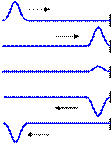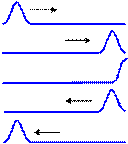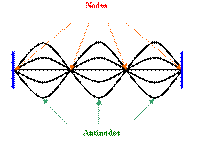
КАТЕГОРИИ:
Архитектура-(3434)Астрономия-(809)Биология-(7483)Биотехнологии-(1457)Военное дело-(14632)Высокие технологии-(1363)География-(913)Геология-(1438)Государство-(451)Демография-(1065)Дом-(47672)Журналистика и СМИ-(912)Изобретательство-(14524)Иностранные языки-(4268)Информатика-(17799)Искусство-(1338)История-(13644)Компьютеры-(11121)Косметика-(55)Кулинария-(373)Культура-(8427)Лингвистика-(374)Литература-(1642)Маркетинг-(23702)Математика-(16968)Машиностроение-(1700)Медицина-(12668)Менеджмент-(24684)Механика-(15423)Науковедение-(506)Образование-(11852)Охрана труда-(3308)Педагогика-(5571)Полиграфия-(1312)Политика-(7869)Право-(5454)Приборостроение-(1369)Программирование-(2801)Производство-(97182)Промышленность-(8706)Психология-(18388)Религия-(3217)Связь-(10668)Сельское хозяйство-(299)Социология-(6455)Спорт-(42831)Строительство-(4793)Торговля-(5050)Транспорт-(2929)Туризм-(1568)Физика-(3942)Философия-(17015)Финансы-(26596)Химия-(22929)Экология-(12095)Экономика-(9961)Электроника-(8441)Электротехника-(4623)Энергетика-(12629)Юриспруденция-(1492)Ядерная техника-(1748)
Standing waves
|
|
|
|
Two or more waves traveling in the same medium travel independently and can pass through each other. In regions where they overlap, the disturbances add like vectors.


The two wave pulses above interfere constructively when they meet.
These two wave pulses interfere destructively.
When the medium through which a wave travels abruptly changes, the wave may be partially or totally reflected. When a wave pulse traveling along a rope reaches the end of the rope, it is totally reflected. The details of the reflection depend on if the end of the rope is tied down and fixed, or if it  is allowed to swing loose.
is allowed to swing loose.
This wave pulse is totally reflected from a rope with a fixed end. Upon reflection, it is inverted.
This wave pulse is totally reflected from a rope with a loose end. It is not inverted upon reflection.
 When a periodic wave is totally reflected, then the incident wave and the reflected wave travel in the same medium in opposite directions and interfere.
When a periodic wave is totally reflected, then the incident wave and the reflected wave travel in the same medium in opposite directions and interfere.
When the medium is of finite extend, then the waves reflect on both ends. Consider a string fixed on both ends. When the wavelength of the waves is just right, so that an integral number of half wavelengths fit into the length of the string, a standing wave forms.
A standing wave is a pattern which results from the interference of two or more waves traveling in the same medium. All standing waves are characterized by positions along the medium which are standing still. Such positions are referred to as nodes. Nodes are the result of the meeting of a crest with a trough. This leads to a point of no displacement. Standing waves are also characterized by antinodes. These are positions along the medium where the particles oscillate about their equilibrium position with maximum amplitude. Antinodes are the result of a crest meeting a crest and a trough meeting a trough. Standing wave patterns are always characterized by an alternating pattern of nodes and antinodes.
 Standing waves of many different wavelengths can be produced on a string with two fixed ends, as long as an integral number of half wavelength fits into the length of the string. Each wavelength corresponds to a particular frequency and is known as a harmonic. Wavelength and frequency are related through f = v, where v is the speed of waves along the string. The shorter the wavelength, the higher is the frequency. The lowest possible frequency of a standing wave is known as the fundamental frequency or the first harmonic. Only half a wavelength fits into the length of the string
Standing waves of many different wavelengths can be produced on a string with two fixed ends, as long as an integral number of half wavelength fits into the length of the string. Each wavelength corresponds to a particular frequency and is known as a harmonic. Wavelength and frequency are related through f = v, where v is the speed of waves along the string. The shorter the wavelength, the higher is the frequency. The lowest possible frequency of a standing wave is known as the fundamental frequency or the first harmonic. Only half a wavelength fits into the length of the string
The second lowest frequency at which a string could vibrate is known as the second harmonic, the third lowest frequency is known as the third harmonic, and so on.
The frequency associated with each harmonic depends on the speed with which waves move through the medium and the wavelength of the wave. For a string the speed of the waves is a function of the mass per unit length = m/L of the string and the tension F in the string

Chapter 9
Electrostatics
|
|
|
|
|
Дата добавления: 2014-01-05; Просмотров: 417; Нарушение авторских прав?; Мы поможем в написании вашей работы!